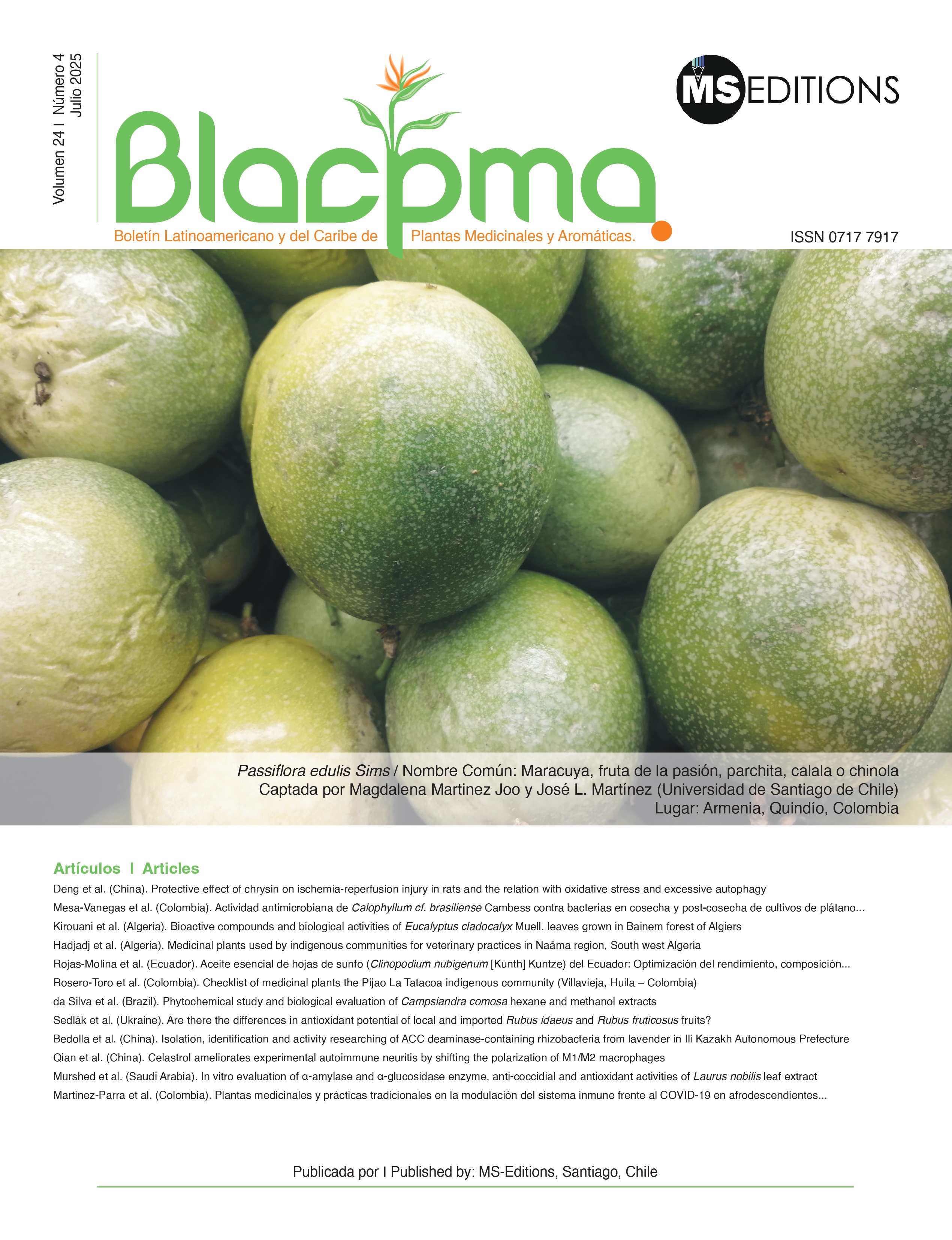Antimicrobial activity of Calophyllum cf. brasiliense Cambess against bacteria in harvest and post-harvest of plantain and banana crops
DOI:
https://doi.org/10.37360/blacpma.25.24.4.36Keywords:
Biocontrol, Phytopathogenic bacteria, Phenylcoumarins, Bioinputs, MetabolitesAbstract
The most important losses in banana crops have been caused by phytopathogenic bacteria such as Ralstonia solanacearum. The Calophyllum genus is a source of metabolites with antimicrobial potential, with reports in the medical field and few in the control of phytopathogenic and protective agents in food. In this study, the biological activity of Calophyllum brasiliense Cambess was evaluated on a phytopathogenic microbial isolate in harvest and three pathogenic microbial strains of fresh agricultural foods. In addition, the spectroscopic characterization of a 4-phenylcoumarin called soulatrolide was performed. Regarding the activity on R. solanecearum, Bacillus subtilis and Bacillus cereus, inhibition zones > 12.0 ± 0.1 mm were presented. This is the first report of promising activity of C. brasiliense on R. Solanecearum. The results motivate to continue with the studies of C. brasiliense and its metabolites as biocontrollers in foods of great global importance.
Downloads
Downloads
Published
How to Cite
Issue
Section
License

This work is licensed under a Creative Commons Attribution-NonCommercial-NoDerivatives 4.0 International License.

